Eternal Blossoms Made with Silk and Wire
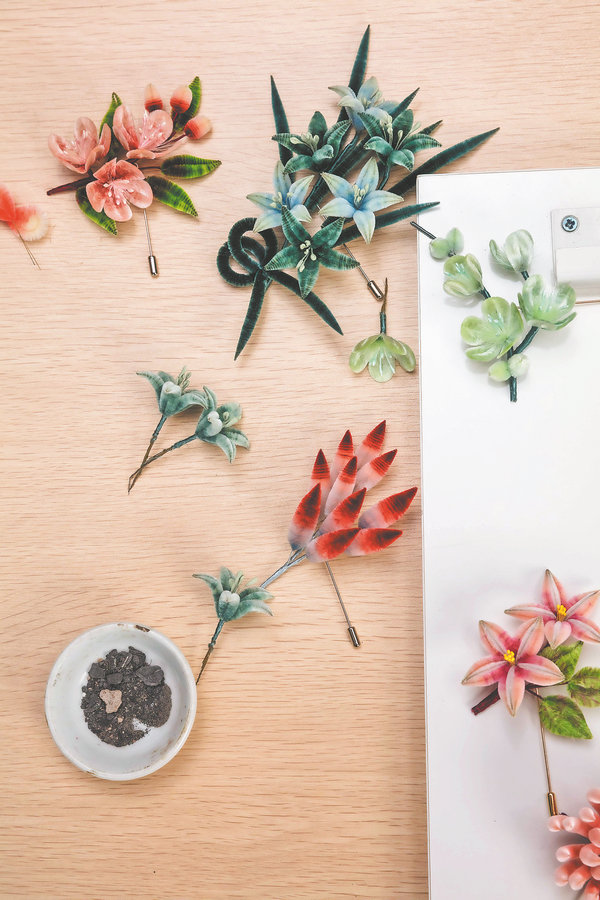
Velvet flowers made by Zhao Shuxian and his team embody a long-standing handicraft tradition in Nanjing, Jiangsu province. [Photo provided to China Daily]
When Zhao Shuxian started working at an art and craft factory in Nanjing in Jiangsu province in 1973, the then 19-year-old was given the job of mastering the time-honored craft of making "velvet" flowers from silk. His goal was to be promoted to the designer's workshop where he would be able to make whatever he wanted, and earn a better living.
Five decades have passed since then. Today, Zhao is recognized as one of the few seasoned makers of this ornament, production of which is still done by hand.
His colorful silk flowers are popular with young women who have turned them into a new urban trend and share pictures on social networks. The undying floral ornaments have also featured in popular period dramas, on red carpet outfits, at fashion shows and in the new collections of luxury brands.
The practice of wearing velvet flowers is believed to date to the Tang Dynasty (618-907). They were sent to imperial palaces as items of tribute during the reign of Wu Zetian, China's only empress, and became a popular hair embellishment for aristocrats and women serving at the court.
"It was common for court ladies to decorate their hair with flowers," Zhao says. "But fresh flowers are not available all year around, so gradually fabric flowers became a substitute."
The trend spread to ordinary people. In Nanjing, the commercial area near Sanshan Street and Changle Road used to be known as the "flower market", and was a hub of boutiques making and selling velvet flowers. The flowers were often used as hair decorations, brooches and ornaments by opera singers.
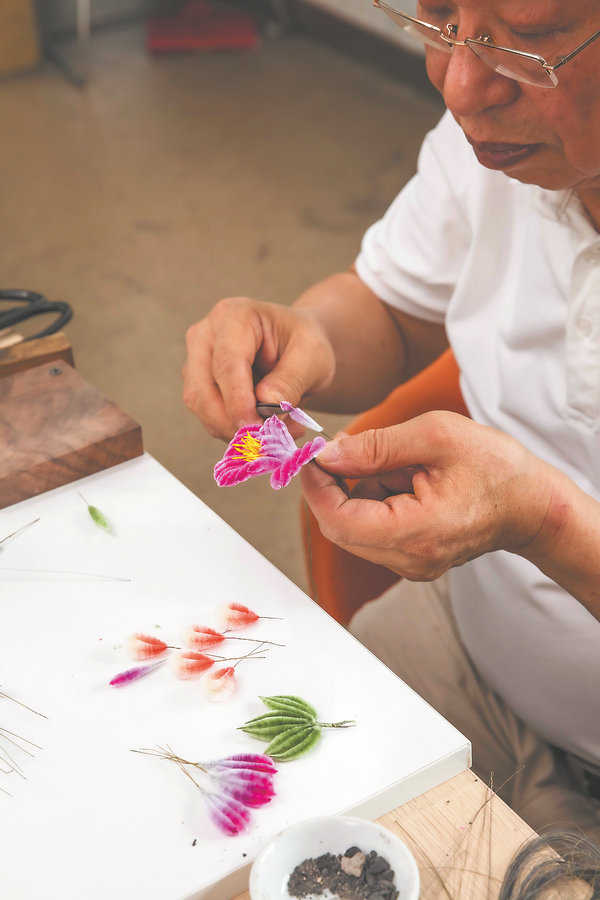
Zhao Shuxian turns trimmed velvet sticks into flowers. [Photo provided to China Daily]
The market for velvet flowers prospered in Nanjing and later extended to the rest of Jiangsu province, thanks to a plentiful supply of quality silk and booming textile and handicraft industries involved in the making of sophisticated products like yunjin silk brocade.
Velvet flowers are called ronghua in Mandarin, a homophone for the characters meaning "prosperity" and "auspiciousness". Wearing them as a blessing and to ward off evil spirits became customary at wedding ceremonies, Lunar New Year, the Dragon Boat Festival and Mid-Autumn Festival.
Today, Zhao's customers, who come from all over the world, wear his flowers in their hair, and on the hats, bags and dresses, both as an everyday item and on special occasions.
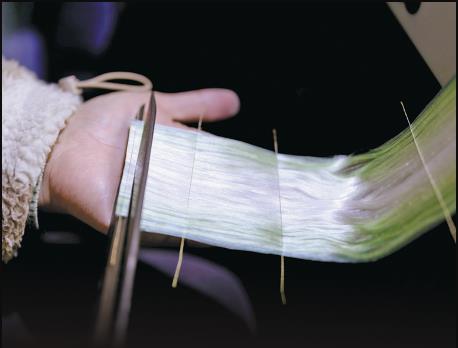
Soft silk threads are groomed and trimmed for further use. [Photo by Li Jin/China Daily]
Flood of orders
Nanjing used to have a number of family-run velvet flower studios in the 1930s and '40s. Many of Zhao's instructors at the factory developed their experience at these private workshops.
Today, he has a studio of his own, as well as a company that designs and manufactures velvet flowers. It is located in a room just over 10 square meters in size at the Nanjing Folk Museum and Intangible Cultural Heritage Museum, which is not far from the old flower market and the bustling Qinhuai River scenic area.
The museum is housed in a magnificent compound of classic architecture called Ganxi Mansion or the Gan Family Courtyard. This private estate was first built by a prominent local family about 200 years ago and after several extensions, now occupies a floor area of around 9,500 square meters.
Over the years, the mansion has become a hub for cultural heritage brands and handicraft studios, including Zhao's.
His studio, which moved there in 2008, is packed with desks, boxes of tools and materials and a demonstration area of finished pieces. It is where Zhao and his proteges deal with the flood of orders, receive visitors and give interviews to media.
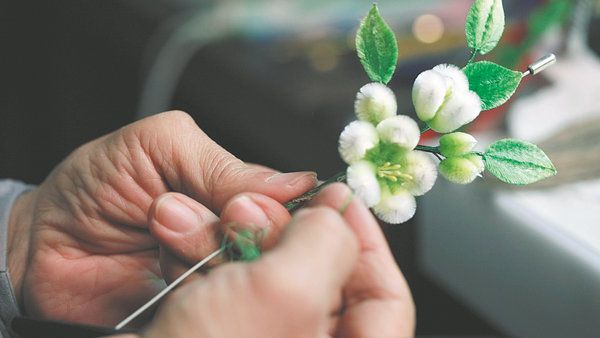
Silk sticks are arranged to form a floral cluster. [Photo by Li Jin/China Daily]
It is also in this cramped space where flowers made using "silk as flesh and thin copper wire as bone", as the local saying goes, emerge from the minds of artisans and their dexterous fingers.
To make a velvet flower, fine threads of silk are first boiled to be softened, then they are dyed, shaped and rolled evenly onto the wire frame. Next, the velvet sticks are trimmed into different shapes, and twisted to create the design that has been ordered.
It is a delicate process that demands great patience and a tranquil heart, as well as a great deal of time.
At the factory, it took Zhao about six years to master all the procedures. Today, the boiling and dying are outsourced, so his young proteges can focus on designing and crafting.
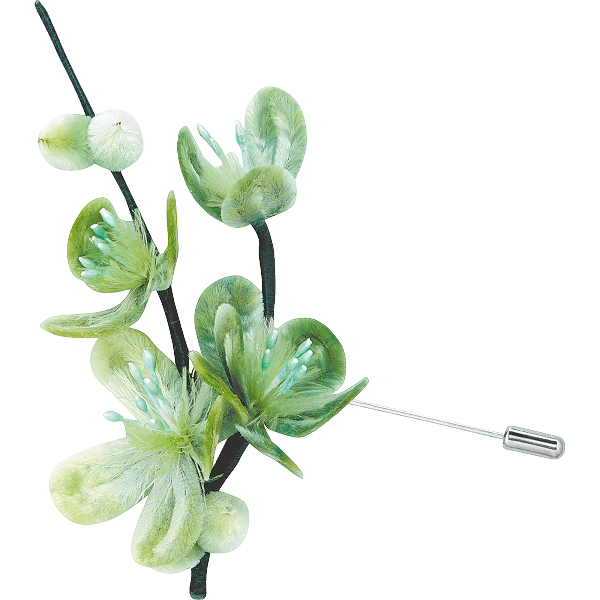
Velvet flowers in various colors and shapes made by Zhao Shuxian and his team. [Photo by Wang Qiqi/China Daily]
Mutually inspired
Li Lu, a full-time artisan in her 20s at Zhao's workshop, stumbled into the trade a few years ago during a visit to the museum. She was taken by the magical way hands can turn silk into long-lasting blossoms that are graceful and serene.
"I majored in calligraphy at university, but I was confused about my future career as a professional calligrapher," she says. "Then one day, an encounter with the velvet flowers made me feel that maybe I could develop a career out of it.
"Because, you see, practicing calligraphy and making handicrafts are the same in many ways. They both require a peaceful mind, diligent fingers and imagination, in which I had been trained for years."
Li didn't know at the time that back in the late 1990s, her future mentor faced a similarly difficult situation. For a time, he made chickens, eggs and other items ordered by clients abroad, mostly in Europe and the Americas, who needed pieces for Christmas and Easter decorations. When business dropped sharply, he left the factory to make a better living and found a job as an editor at a map-publishing house.
Things changed in 2006 when the craft was recognized as part of the cultural heritage of Jiangsu. As a master of the overall process, Zhao was given the accolade of provincial-level inheritor and opened his own studio.
"I threw myself back into the trade," Zhao says, "not only because I wanted to revive it, but also to train new generations so that young people would fall in love with velvet flowers."
One of the changes he has made is to replace highly-saturated colors — traditionally favored to create a festive mood — with lighter hues with an undertone of gray that suits the tastes of the younger generation.
He also makes velvet flower paintings in which he infuses the rich palette of oil paintings with the tranquil, poetic mood of Chinese paintings through the use of liubai, a technique that introduces areas of blank space to pictures.
The broadcast of the phenomenally successful historical series The Story of Yanxi Palace in 2018 placed velvet flowers in the limelight. Several of the female characters wore hair ornaments made by Zhao and his team, which were modeled on original examples found in old photos in the collection of the Palace Museum.
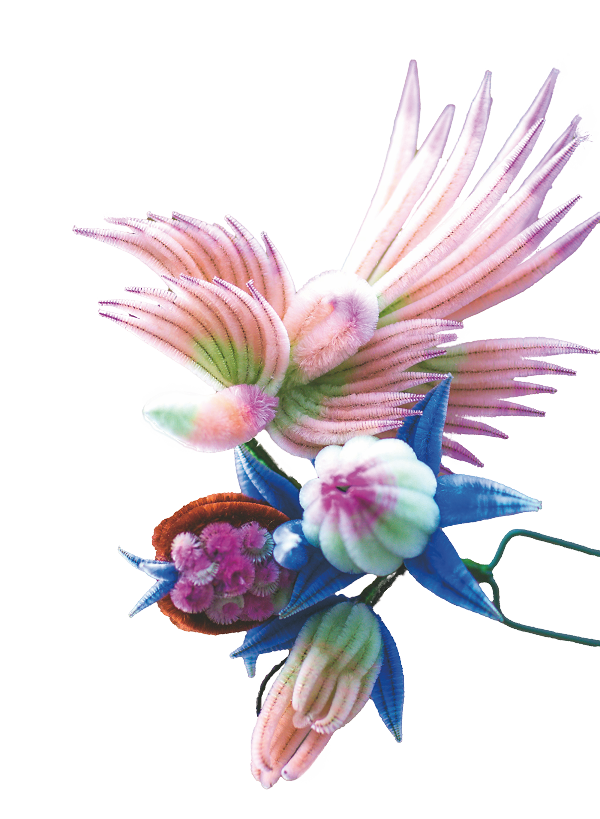
Velvet flowers in various colors and shapes made by Zhao Shuxian and his team. [Photo by Wang Qiqi/China Daily]
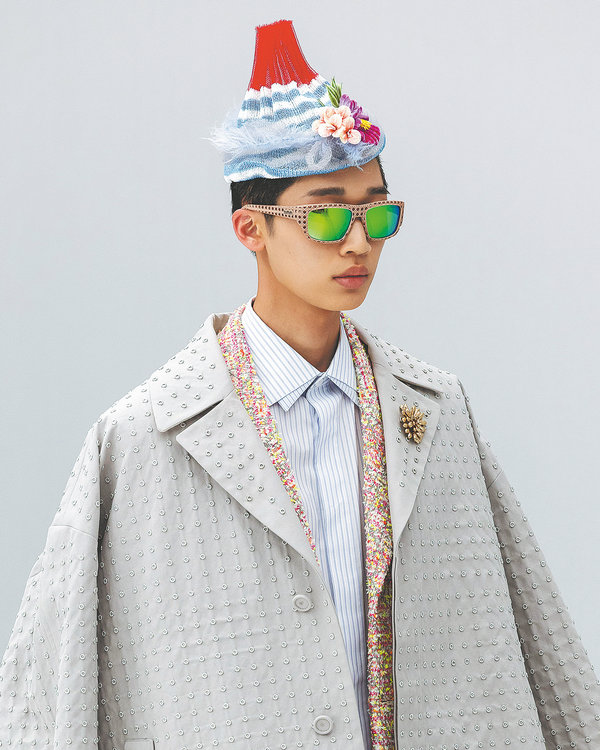
Velvet flowers made by Zhao and his team appear as hat embellishments in Dior men's summer 2024 collection. [Photo provided to China Daily]
Commissions have since flooded in, and new products in their online store often sell out quickly. The rocketing fame has also introduced Zhao and his work to an international stage: The velvet flowers appeared as hat embellishments in Dior's men summer 2024 collection and show. Zhao and his team worked with the Dior atelier to adapt this colorful velvet tradition for haute couture menswear, evoking a sense of crisp, playful modernity, practicality and ease.
"They (Dior) used our velvet flowers in the knit hats," Zhao says, "which is creative and unique".
"The use of Chinese elements is a recognition of our traditional culture. Meanwhile, we have also learned new ideas of design, and felt what is happening in the global fashion world. The collaboration is a fruit of people-to-people exchanges."

Velvet flowers made by Zhao and his team appear as hat embellishments in Dior men's summer 2024 collection. [Photo provided to China Daily]
Zhao believes that he should continue to work slowly, so that quality and creativity are not sacrificed for quick return.
"I tell young people at the workshop that a lot of seasoned artisans older than me, as well as of my generation, have made velvet flowers their whole lives and have remained unknown.
"I tell them that we should first have good technique, good designs and quality, then we can carve out a niche in the market and make a living from it. That is basically what we can and should do well when we have committed to a career. Then maybe one day, good things will happen, and we will be rewarded."
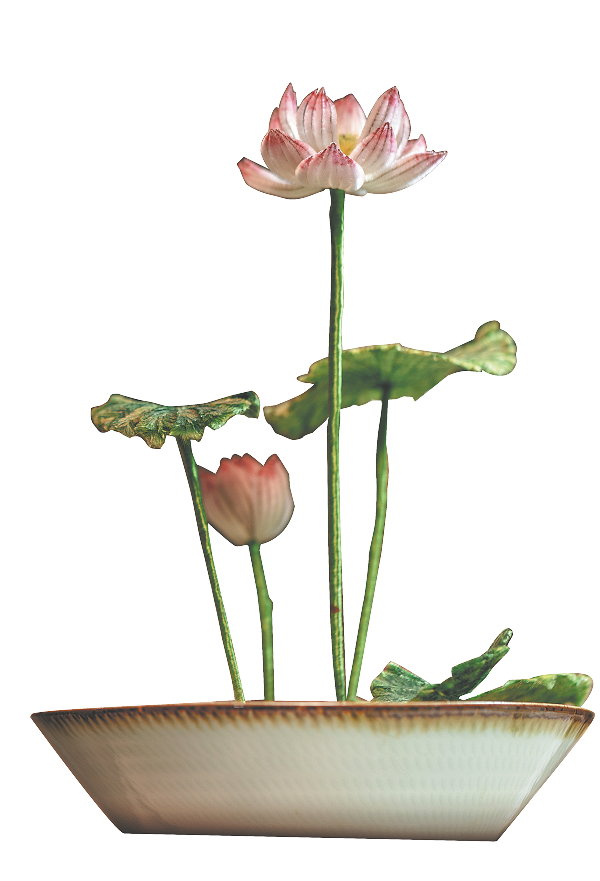
Velvet flowers in various colors and shapes made by Zhao Shuxian and his team. [Photo by Wang Qiqi/China Daily]
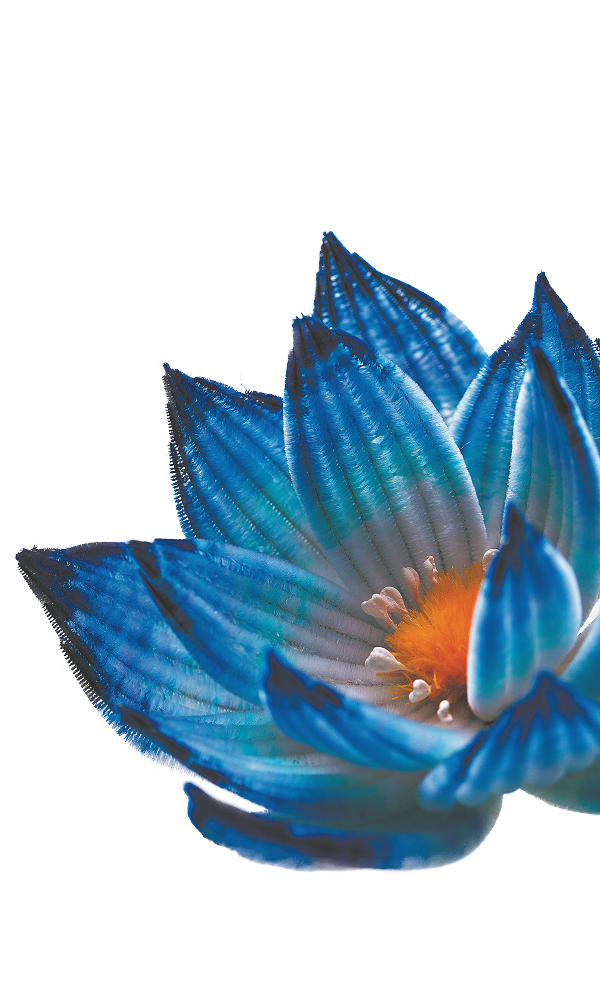
Velvet flowers in various colors and shapes made by Zhao Shuxian and his team. [Photo by Wang Qiqi/China Daily]

Velvet flowers in various colors and shapes made by Zhao Shuxian and his team. [Photo by Wang Qiqi/China Daily]
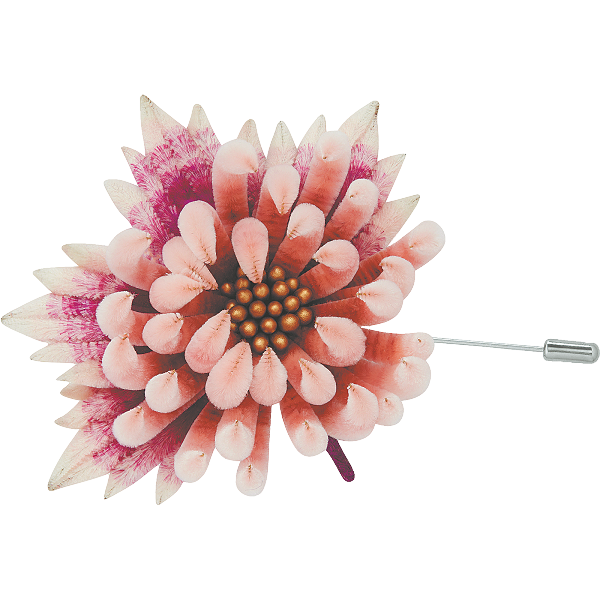
Velvet flowers in various colors and shapes made by Zhao Shuxian and his team. [Photo by Wang Qiqi/China Daily]
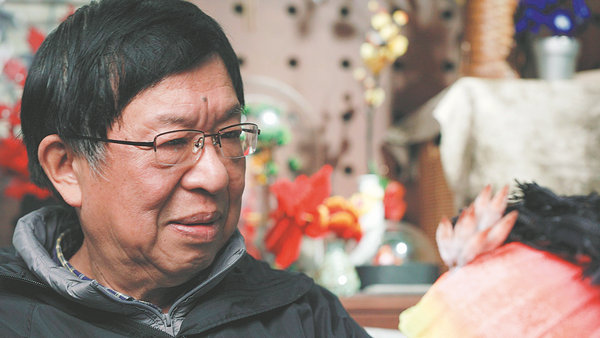
Zhao Shuxian [Photo provided to China Daily]